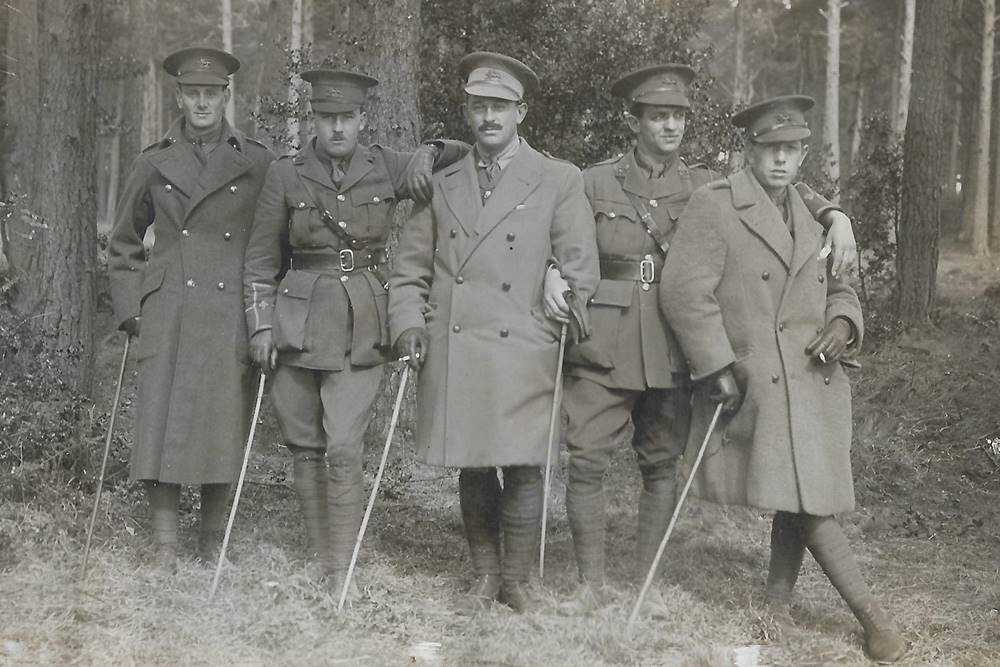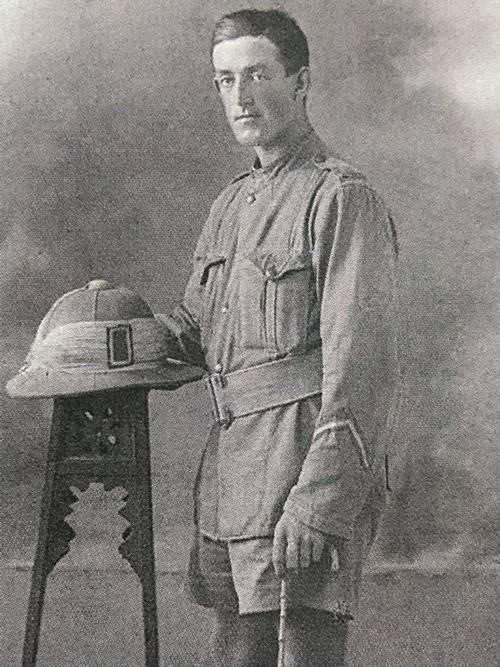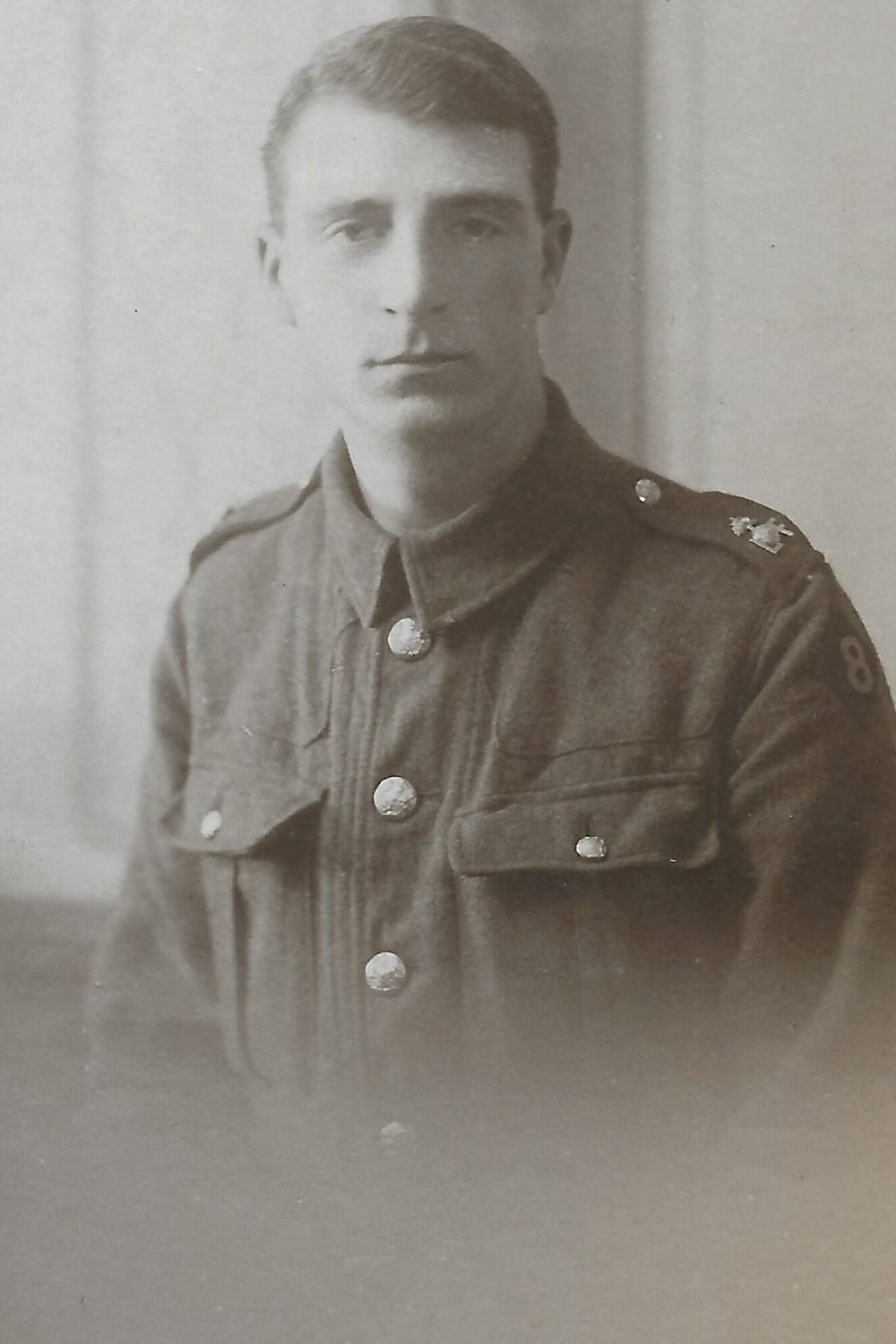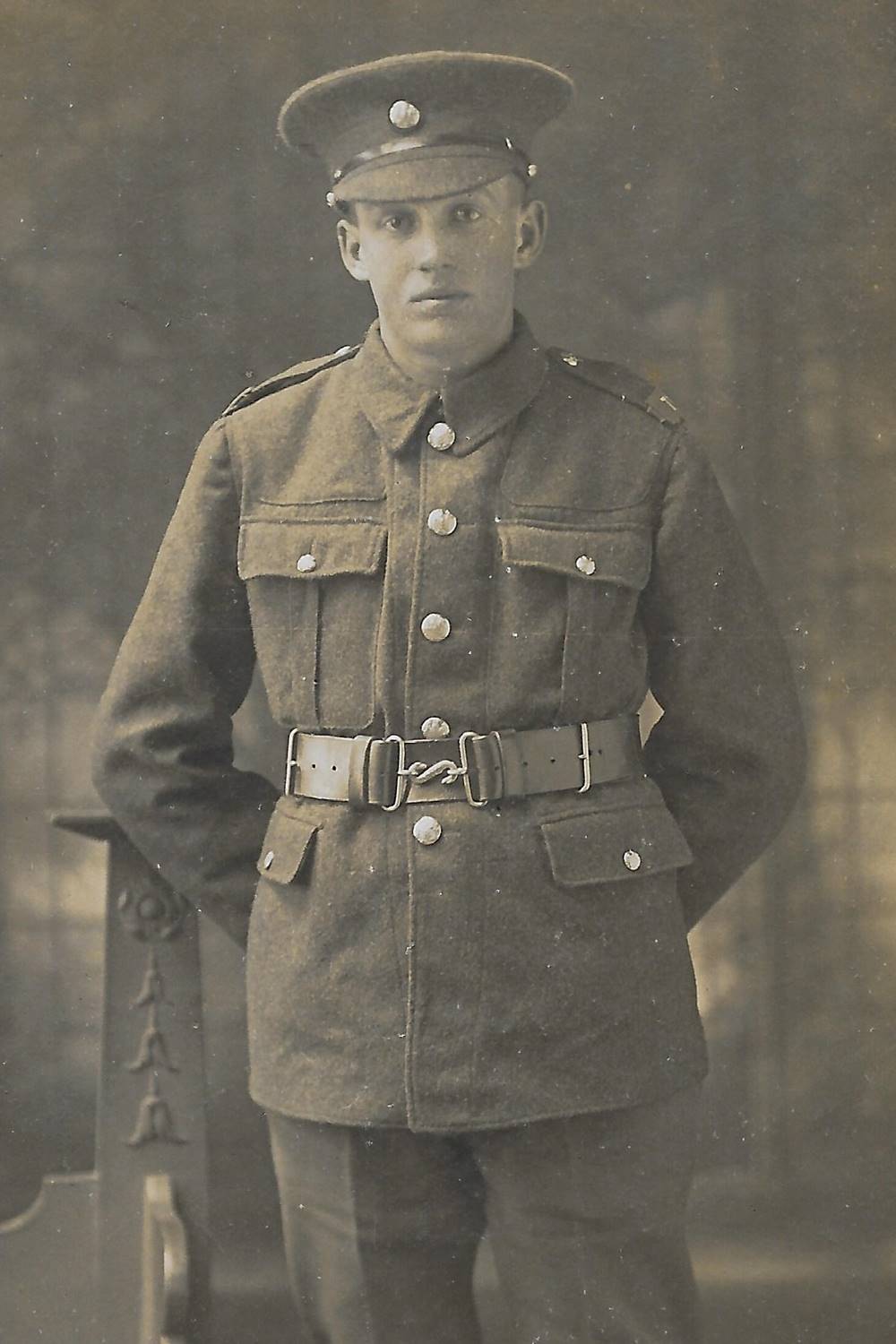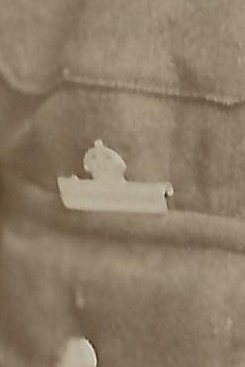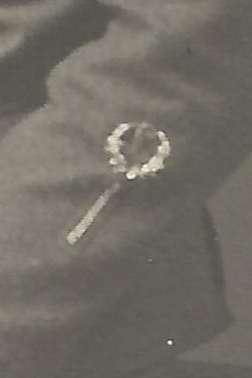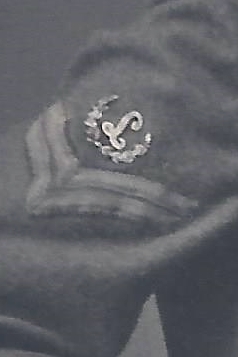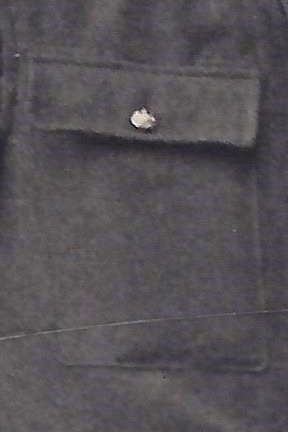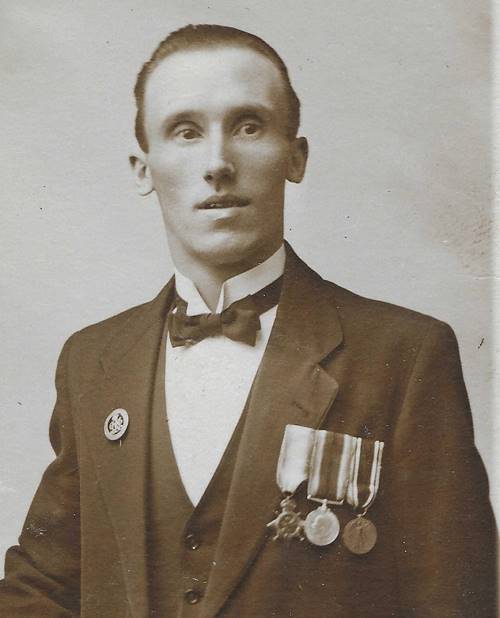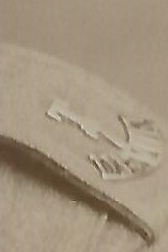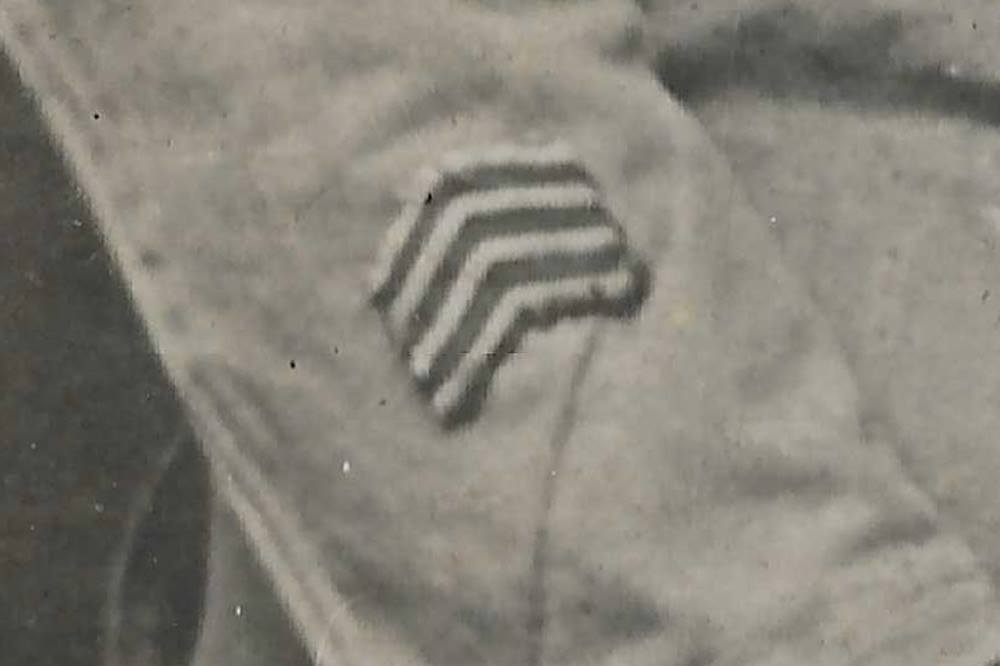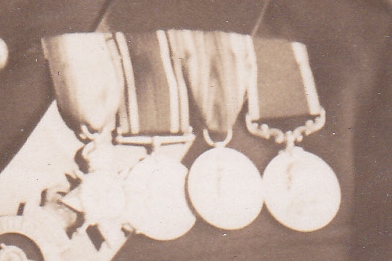This guide will help you to interpret a photograph of a First World War British soldier in uniform. There was a great variety of insignia and equipment worn during the war and this page can only provide the most basic overview. As many service records have been lost, a photograph may hold the key to correctly identifying a soldier. This is one of a series of guides I have created on researching those who served in the British Army:
Interpreting Photographs of First World War Soldiers
I have used the photograph below to show my thought process when analyzing a photograph. Its description when I bought it was simply “WW1 postcard”. The photograph shows five officers of the 6th (Service) Battalion The King’s Own (Royal Lancaster Regiment) and was taken around February 1915. All this information can be found on the postcard, apart from the date. Officers are usually easy to spot in photographs as they usually wore a different uniform and equipment. The fact that all five men are wearing ties is the first give away, though some Warrant Officers also wore ties. Two of the officers have cuff ranks on their service jackets, with the greatcoats probably obscuring them on the other three. The single bath star shows that both men are Second Lieutenants. Another sign is the leather Sam Browne belts worn by the two men without greatcoats. Walking canes were also a popular accessory for officers, though also used by other ranks, especially when convalescing. You should always try to analyze the photograph as a whole rather than focus on one particular aspect of it.
The officers’ regiment is shown in their cap badges. The King’s Own (Royal Lancaster Regiment) had a very distinctive cap badge which can be spotted even at a distance. It consisted of a lion surmounting the words “The King’s Own”. Many regiments had very similar cap badges so you will often need to put a photograph under a magnifying glass or scan it at a very high resolution. The two officers without greatcoats are wearing the Regiment’s metal collar badges which can be seen quite clearly when zoomed in on the officer on the second left. The reverse of the photograph can often provide important clues which may at first glance seem quite mundane. The back of this photograph is postmarked at Romsey Camp where the 6th (Service) Battalion was stationed in early 1915. You can tell its still cold by the fact that gloves and greatcoats are being worn.
If you are researching a lot of soldiers or are just interested in the First World War I would highly recommend British Army Cap Badges of the First World War by Chris Foster and Peter Doyle.
The photograph below shows Private Percy A. Saunders who served with the Norfolk Yeomanry (The King’s Own Royal Regiment). A descendant of Percy’s contacted me regarding this photo as she had trouble identifying the soldier and wasn’t sure which family member it was. I was able to identify the soldier from one piece of insignia. Percy was wearing khaki drill, a cotton uniform which replaced the woollen service dress in hot climates. Khaki drill is usually a good indication that a photograph was taken abroad, somewhere hot e.g. Egypt or India.
Another indication that Percy is somewhere hot is his Wolseley Pattern helmet with a puggaree wrapped around it. Cap badges were sometimes worn tucked into this puggaree. On the side of Percy’s puggaree is a battle flash. There are hundreds of these battle flashes and they can be a nightmare to research if you haven’t identified what units a soldier served. This flash of three rectangles was only worn by the Norfolk Yeomanry and there was only one possible relative it could be, Percy Saunders. He was from Norfolk and wears a good conduct stripe on his lower left-hand sleeve. My thanks to Sandra Stewart for letting me use the photograph.
The photograph below shows an unknown Private serving with the 8th Battalion The Lancashire Fusiliers. You can tell he is a Private as there are no chevrons on the sleeves of his service jacket. His metal shoulder title is an L and an F with a flaming grenade in the middle which was used by the Lancashire Fusiliers. The 8th Battalion of the Regiment used the number 8 in a diamond as its flash.
The photograph below shows a young soldier serving with an unknown battalion of the Training Reserve which was formed in September 1916. The Training Reserve initially used a large general service button on a red disc as a cap badge. On the soldier’s left-hand shoulder title can be seen the T of T.R. which stood for Training Reserve. This was also dropped later in the war.
This photograph shows a Territorial Force Imperial Service Badge which was worn over a soldier’s right chest. If your soldier was wearing this badge then he was a member of the Territorial Force, the forerunner of the Territorial Army. I have written an article about the badge here: Imperial Service Badge.
Look carefully for wound stripes, which appear on the lower left jacket sleeve of a soldier. These can be hard to distinguish so it’s best to scan a photograph to be sure. If you have a photograph of a soldier with a wound stripe it will date from July 1916. A soldier with a wound stripe should also appear in a casualty list. I have written an article about wound stripes here: wound stripes.
On a soldier’s sleeve (above the elbow) there could be a number of chevrons depending on his rank. As a general rule, though there are exceptions, for the infantry the following will usually apply: 1 for a Lance Corporal, 2 for a Corporal or 3 for a Sergeant. The sleeve on the left belonged to a Bombardier (Corporal) in the Royal Artillery. The Bombardier also wears a Gun Layer appointment badge which was an L in a wreath.
Have a look at the pockets of a soldier’s jacket. If there are no pleats, then they are wearing a simplified pattern service dress, introduced in late 1914 to meet production demand. While this jacket was in use throughout the war, you are more likely to see this jacket on a soldier who volunteered during the first year of the war.
A Silver War Badge should never be worn on a military uniform but you will see it worn on civilian dress. If a man or woman is wearing a Siver War Badge then it means that they were honourably discharged from the armed forces during the First World War. A photograph in which a Silver War Badge appears dates from September 1916. I have written a separate article about the badges here: The Silver War Badge.
Shoulder titles may also be visible in the photograph and this is where I would really recommend scanning the image as they are often very difficult to see. It is best to scan the image in a high resolution and zoom in on a computer. The distinctive T marks this soldier out as a member of the Territorial Force. Though it is hard to read, he was serving in the 7th Battalion Devonshire Regiment.
Look at a soldier’s lower right sleeve as he may be wearing Overseas Service Chevrons. Learn more about them here: overseas service chevrons.
These medals belong to my great-great uncle. He was wearing a 1914-15 Star, British War Medal, Victory Medal and the Army Long Service Good Conduct Medal. Learn more about medals with my guide: First World War Campaign Medals.

